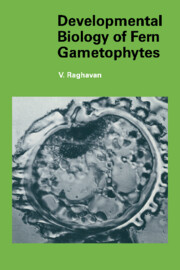Book contents
- Frontmatter
- Contents
- Preface
- Abbreviations
- 1 Introduction
- PART I THE BEGINNING
- 2 The spore – beginning of the gametophytic phase
- 3 Physiology of spore germination
- 4 Cell determination and morphogenesis during germination
- 5 Biochemical cytology and biochemistry of germination
- PART II GROWTH AND MATURATION
- PART III REPRODUCTIVE STRATEGIES
- PART IV DEVELOPMENTAL OPTIONS
- References
- Author index
- Subject index
2 - The spore – beginning of the gametophytic phase
Published online by Cambridge University Press: 11 September 2009
- Frontmatter
- Contents
- Preface
- Abbreviations
- 1 Introduction
- PART I THE BEGINNING
- 2 The spore – beginning of the gametophytic phase
- 3 Physiology of spore germination
- 4 Cell determination and morphogenesis during germination
- 5 Biochemical cytology and biochemistry of germination
- PART II GROWTH AND MATURATION
- PART III REPRODUCTIVE STRATEGIES
- PART IV DEVELOPMENTAL OPTIONS
- References
- Author index
- Subject index
Summary
It was noted in the introductory chapter that, in ferns, the genesis of a spore marks the beginning of the developmental process that produces a gametophyte. From the standpoint of understanding the evolution of the gametophyte in multicellularity, sexuality and functional competence, an understanding of the formation of the spore and of its structure is important. Therefore, in this chapter we focus on sporogenesis in ferns and on the normal course of morphogenesis of the spore to attain maturity. For the most part we will be concerned with description of events, with little emphasis on the underlying mechanisms. As we shall see later, some features of sporogenesis are surprisingly similar across the entire group of ferns, although the final products generated vary somewhat in their morphology.
Sporogenesis
Existing evidence suggests that the types of spores produced by ferns are of great significance in the evolution of the group. Although evolutionary considerations are not emphasized in this book, we shall nonetheless begin this part with an account of the two major spore types found in ferns.
Homospory and heterospory
One of the most important concepts generated from studies on sporogenesis in ferns is the recognition of homosporous and heterosporous plants (Fig. 2.1). Homosporous types produce only one kind of sporangium and just one kind of spore, as is characteristic of the vast majority of extant ferns.
- Type
- Chapter
- Information
- Developmental Biology of Fern Gametophytes , pp. 9 - 26Publisher: Cambridge University PressPrint publication year: 1989



